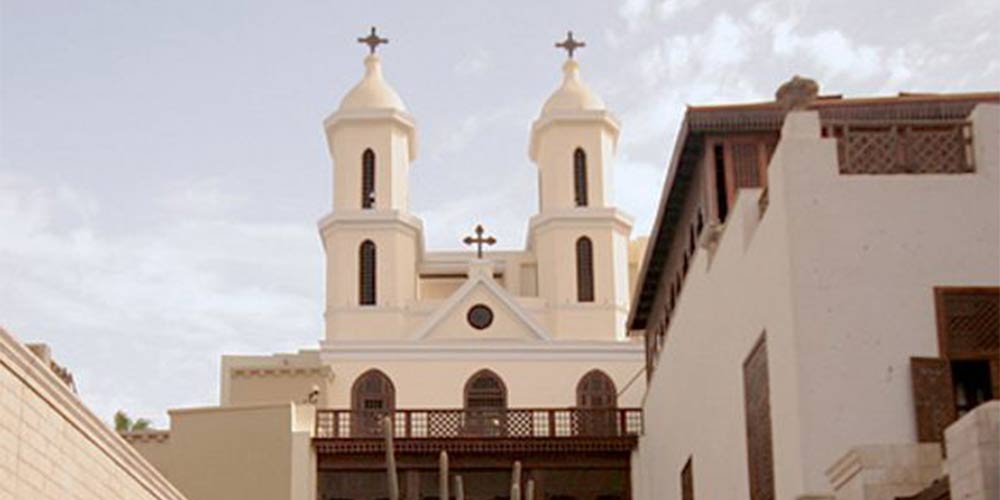The 5 most famous Coptic places in Wonderful Cairo.
Discover the Holy Family’s refuge, the enigmatic Hanging Church, and more in Coptic Cairo. A fascinating blend of art, history, and spirituality in the heart of Egypt.
Egypt, a country known for its ancient pyramids and pharaohs, is also home to a rich Christian history that is often overlooked. Coptic Cairo, a part of Old Cairo, offers visitors a journey through time, unraveling the mysteries of Egypt’s Coptic Christian past. With a plethora of historically significant sites, Coptic Cairo stands as a testament to a community that has withstood persecution, changing empires, and the sands of time.
1. Babylon Fortress: The Beginning
Before diving into the Christian history, it’s crucial to understand the foundation of Coptic Cairo – the Babylon Fortress. This ancient fortress, around which Coptic Cairo grew, dates back to the time of the Persians. Later, during the Roman era, it became a vital stronghold. With its thick walls and strategic location, it played a pivotal role in the defense of the region.
2. The Coptic Museum: A Treasure Trove of History
Founded in 1908, the Coptic Museum is a haven for anyone keen on understanding the depth and beauty of Coptic art and history. Housing over 15,000 artifacts, this museum showcases the splendid artistry of the Coptic community throughout the ages. With items ranging from manuscripts to textiles to stonework, it offers a comprehensive view of Coptic history from its inception to modern times.
3. The Hanging Church (Saint Virgin Mary’s Coptic Orthodox Church)
Perhaps the most iconic structure in Coptic Cairo is the Hanging Church, so named because of its location above a gatehouse of the old Babylon Fortress. With its stunning wooden roof, reminiscent of Noah’s Ark, this church boasts exquisite decorative features, including beautiful mosaics and intricately carved screens.
It was called the Suspended Church because it was built on two of the ancient towers of the Roman fort. (Fortress of Babylon), and the Hanging Church is the oldest surviving church in Egypt. Therefore the church is a very important and absolutely unmissable stop on the tourist itinerary focused on the places linked to the Holy Family, which characterize the capital of Egypt. The internal decorations feature icons in Greek Orthodox style and have thirteen pillars, which respectively represent Christ and the twelve apostles.
Internal description of the church: The entrance from the street is through iron gates under a pointed stone arch. Then you see a facade with two twin towers and a bell tower outside a narrow courtyard with neo-biblical designs.

4. The Greek Church of St. George
A beacon of the Greek Orthodox community in Cairo, the Church of St. George is an architectural marvel. With its round shape and towering presence, it stands out from the other more ancient structures. Though it underwent a rebuild in the 20th century due to a fire, the church retains much of its historical charm, providing a window into the lives and practices of the Greek Orthodox community in Egypt.
The Church of St. Sergius and Bacchus, also known as Abu Serga.
It is the ancient church built on the site where the Holy Family resided during their escape journey, Its current location is what is known as the Complex of Religions in Old Cairo, within the Fortress of Babylon. Like many other early Christian churches, the Abu Serga church and its underground cave were designed according to the layout of a basilica, thus together consisting of three parts: the porch, the nave and the sanctuary (the cave is under the sanctuary). The church is notable for its unique architectural and artistic elements which reflect the spirit of Coptic church architecture in Egypt. These include the pulpit, font, ivory and wood inlaid templons, and unique religious decoration of saints and apostles.

5. A Tapestry of Other Coptic Churches
Coptic Cairo houses many other churches, each with its distinct history and significance. One notable mention is the Saints Sergius and Bacchus Church, commonly known as Abu Serga. Christian tradition believes that the Holy Family sought refuge at this site during their sojourn in Egypt, fleeing from King Herod’s massacre of infants. As such, it’s a significant pilgrimage site for many Christians today.
Other churches in Coptic Cairo include the Church of St. Mercurius, which boasts relics of its namesake saint, and the Church of Saint Barbara, a beautiful structure dedicated to the early Christian martyr.

Conclusion
Coptic Cairo provides a fascinating dive into Egypt’s Christian past, contrasting the more widely recognized Pharaonic history. A visit to this part of Cairo is not just a journey through ancient structures but an intimate brush with history, faith, and a community’s resilience. Whether you’re a history enthusiast, an architecture aficionado, or a spiritual seeker, Coptic Cairo offers a unique experience that is bound to enrich and enlighten.
Explore Egypt Tours Tripadvisor


Comment (0)